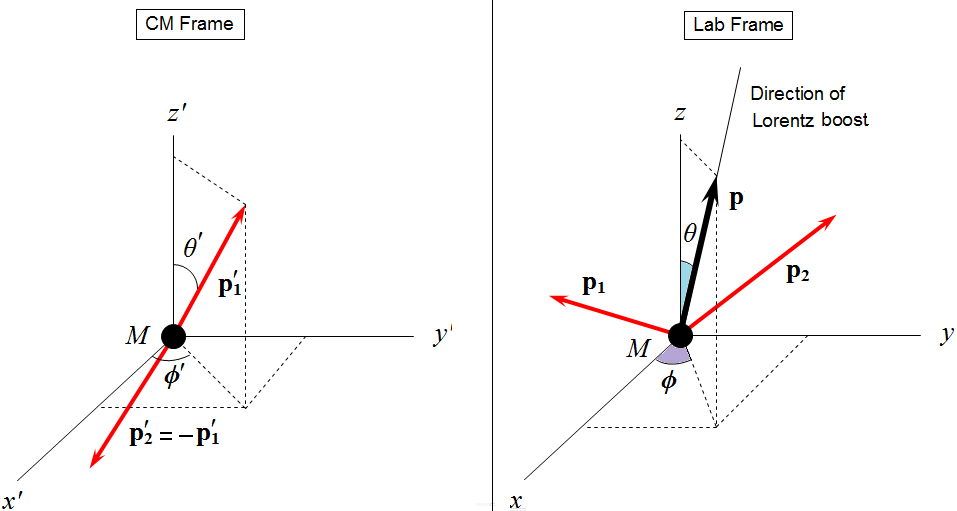
Particle decay is the spontaneous process of one elementary particle transforming into other elementary particles. The fameous one is a two body decay. Here, the kinematics of the two body decay of a particle is described, and the simulation programs are given at the end.
A two-body decay of a parent of mass M can be written as follows:
where m1 and m2 are masses of daughters. The decay proceses both in center of mass (CM) frame and of M and lab frame can be represented as shown in Figure given below:

Conservation of four-momentum:
which can also be written:
squaring both sides:
In the rest frame of M
rearranging yields:
solving for E1 results in:
Similarly:
Finally, the space-momentums of daugthers are:
where:
and
From figure, the vector form of the space-momentums:
The directions (angles defined in CM frame, (x',y',z')) of space-momentums can have any values to cover 4pi solid angle. Hence, the angles are selected as follows: (if R1 and R2 are two uniform random numbers in the range [0,1])
To transfer the momentums from rest frame to a lab frame, we need to use Lorentz Transformation of four-momentums.
This is done as follows:
where p and E is the the momentum and energy of the parent (mother) particle.
Note that the inverse Lorentz Transformations in 3 dimensions are given by: